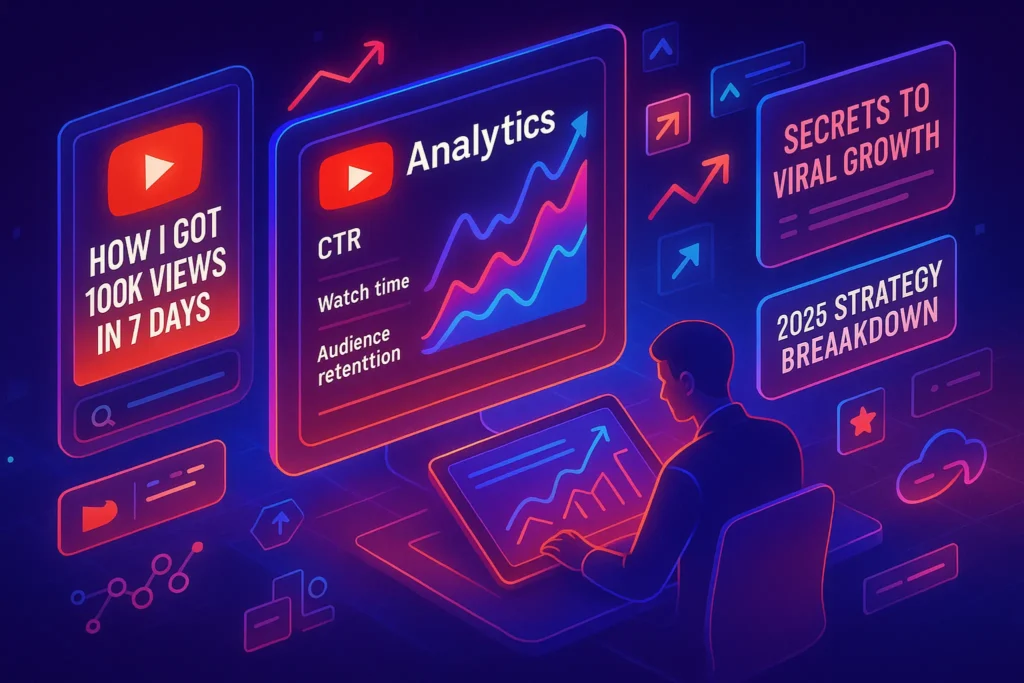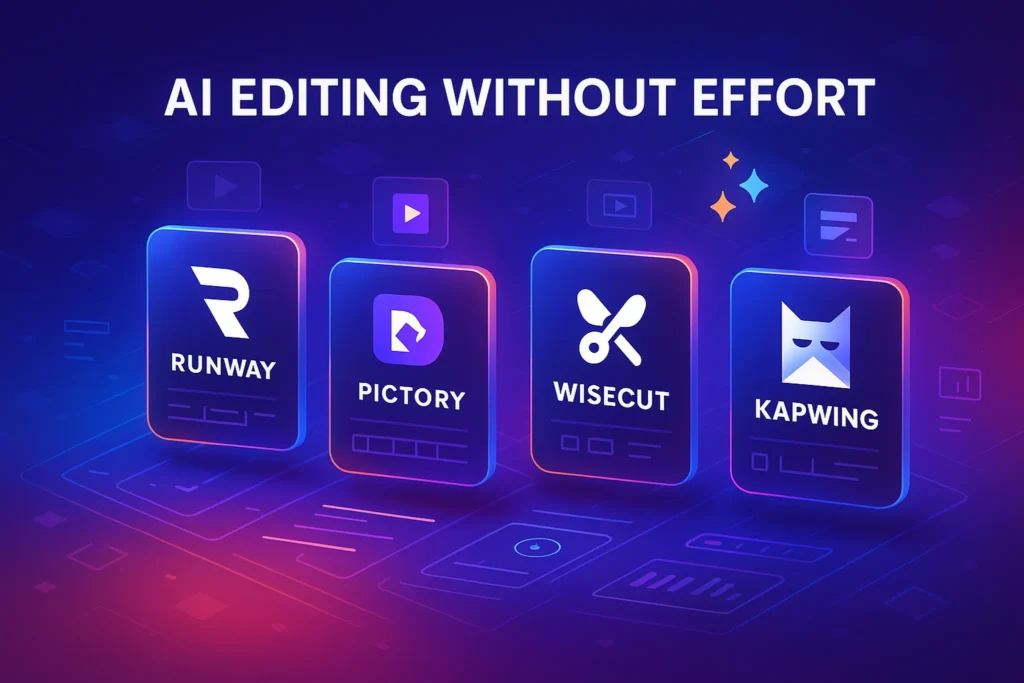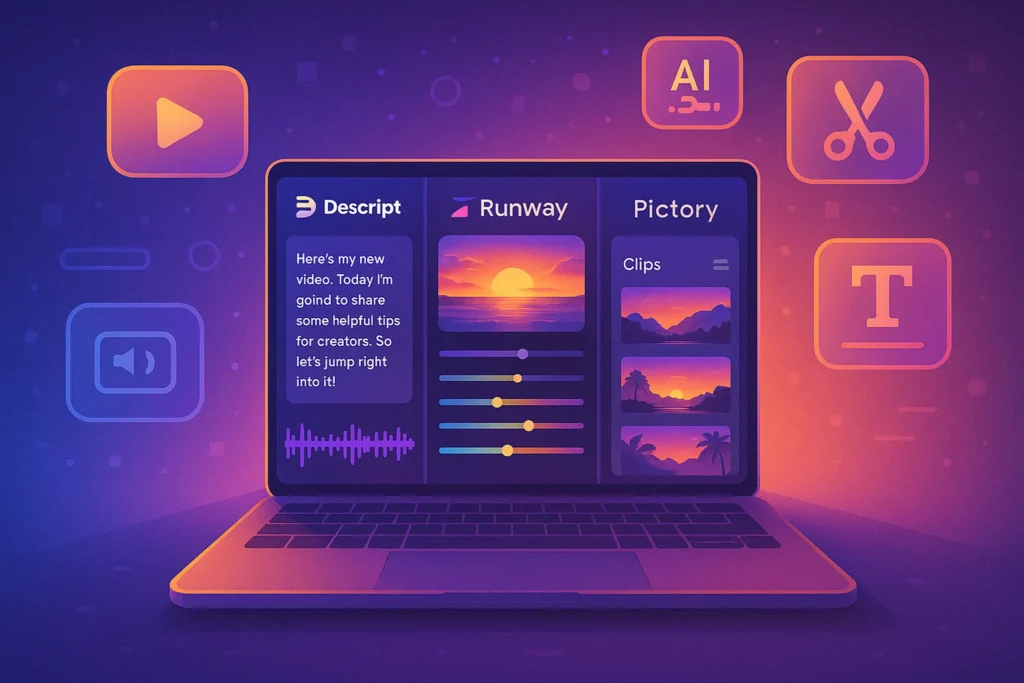-This post may contain affiliate links. If you click on one and make a purchase, I may earn a small commission at no extra cost to you.-
🎬 Introduction: YouTube SEO in 2025 Is a Different Game
Ranking on YouTube used to be all about keywords. Not anymore. In 2025, it’s about behavior signals, viewer retention, and content relevance powered by AI-driven recommendations.
If you want your videos to rank higher, get discovered, and stay visible longer, you need to understand how YouTube’s algorithm works now—and how to work with it, not against it.
This guide covers everything from keyword research and video structure to retention strategies, thumbnails, and even AI-assisted scripting. Whether you’re a solo creator, agency, or brand, this is your roadmap to YouTube visibility in 2025.
🔍 How the YouTube Algorithm Thinks in 2025
One major shift in 2025 is the algorithm’s increasing reliance on behavioral prediction. YouTube now uses advanced machine learning not only to understand what users want but to predict what they’ll watch next. That means your content needs to align with viewing patterns, not just keywords.
If someone watches productivity content every morning, your video on “AI tools for faster editing” is more likely to be shown at 9 AM—if your channel history supports it. That’s why uploading patterns and channel themes matter more than ever.
YouTube also considers session time—how long a viewer stays on the platform after watching your video. If your video leads them to binge more (ideally from your channel), your algorithmic trust score increases.
Finally, A/B testing thumbnails and headlines is now supported natively via YouTube Experiments, allowing data-driven creators to optimize click performance before mass distribution kicks in.
Forget old-school SEO tricks. YouTube’s algorithm today is viewer-centric and powered by deep machine learning. It evaluates:
-
Click-Through Rate (CTR) – Are people clicking your thumbnail?
-
Average View Duration (AVD) – How long are they watching?
-
Watch History Relevance – Is your video aligned with their past behavior?
-
Engagement Signals – Likes, comments, shares, and even replays.
In essence, YouTube rewards satisfaction. If your content keeps people watching and makes them feel like they’re learning, laughing, or staying curious—it ranks.
Not sure how to even get started? A good place is using AI-powered script generators to sharpen your hook, intro, and pacing. Tools in our Best AI Writing Assistants for YouTube Scripts roundup can help you write faster—and smarter.
📈 Free YouTube SEO Toolkit (2025)
Want to rank your videos higher and grow your channel faster? Download our expert-built PDF guide to YouTube SEO in 2025, including real ranking factors, thumbnail tips, retention tactics, and more.
- ✔ Proven SEO Techniques & Ranking Factors
- ✔ Title + Thumbnail Optimization Tips
- ✔ Retention Boosters + Viewer Flow Tactics
🔐 No spam. Just pure strategy from the NerdChips team, delivered straight to your inbox.
🗝️ Keyword Strategy Is Still Alive—But Smarter
In 2025, keyword optimization is less about exact-match terms and more about semantic clustering. The algorithm understands context deeply, meaning your video can rank for “how to film vertical videos” even if your keyword is “YouTube Shorts filming tips”—as long as your script and metadata reinforce the topic.
That’s why using related terms naturally throughout your spoken content, descriptions, and captions is more valuable than repeating the same phrase. Closed captions (especially manually reviewed ones) act as an extra layer of SEO—YouTube scans them for meaning.
Additionally, competitor analysis matters. Use tools like vidIQ or Morningfame to study what high-performing videos in your niche are targeting. Look at their click velocity—how fast views are gained in the first 24–48 hours. Matching that early traction gives your video the momentum it needs to break into suggested feeds.
Yes, keywords still matter. But not in the old meta-tag stuffing way. Instead, focus on:
-
Search Intent: Are users looking for how-to guides, reviews, or entertainment?
-
Long-Tail Keywords: “How to automate video editing with AI” ranks better than “video editing.”
-
Synonyms & NLP Variants: Use natural phrases throughout your script and description.
Start by researching topics using YouTube autocomplete, TubeBuddy, or Keywords Everywhere. Then test different phrasings by looking at top-ranking titles.
Speaking of automation, if you’re short on time or ideas, check out how you can automate YouTube video editing to stay consistent without burning out.
🎯 Hook Viewers in the First 30 Seconds
Retention starts before you even say a word—it begins with energy and visual rhythm. The first 5 seconds of your video should make viewers stop scrolling and lean in. A compelling cold open could be:
-
A surprising result (“I gained 10K subscribers in 48 hours. Here’s how.”)
-
A dramatic question (“Why are 90% of creators editing wrong in 2025?”)
-
A jarring visual (fast zoom, on-screen poll, or B-roll chaos)
Sound design also matters. A well-timed audio cue or beat drop grabs attention just as effectively as a visual cut.
Use script looping techniques, where you set up a question early (“I’ll reveal the secret hack at the end”) to keep viewers watching. This technique is widely used by top creators and can improve Average View Duration significantly.
For even better results, study your Audience Retention Graph in YouTube Studio and identify where drop-offs happen—then restructure future intros accordingly.
YouTube prioritizes retention. That means your intro must grab attention fast. Here’s how:
-
Use a pattern interrupt (surprise, question, stat, or motion shift)
-
Preview the value they’ll get in the video
-
Add jump-cuts or B-roll early to maintain visual momentum
Writing engaging intros is hard. That’s where Best AI Editing Tools for YouTube come in. These tools help trim dead air, add captions, and enhance pacing—all of which improve early retention.
Pro tip: Show the end result first. If your video is about “creating viral thumbnails,” show a thumbnail that got 1M views in the first 10 seconds. Then say, “Let me show you how I made this.”
🖼️ Thumbnails, Titles, and CTR Optimization
A winning thumbnail doesn’t just attract clicks—it attracts the right clicks. That means visual alignment with the actual video content is critical. Misleading thumbnails may bring views, but they increase bounce rate and harm long-term performance.
Here’s how pros approach thumbnail strategy in 2025:
-
Design for mobile first (85%+ of YouTube views are mobile)
-
Keep the subject’s face off-center, allowing space for emotion and contrast
-
Use motion previews in Shorts and Reels to hint at dynamic energy
-
Design in series: batch-create thumbnail styles for video playlists to create brand coherence
As for titles, the golden rule is “clear over clever.” A good title promises a transformation, solves a problem, or piques curiosity—but never sacrifices clarity. Many creators test 2–3 variations of a title before publishing and track which phrasing yields better CTR over time using tools like TubeBuddy A/B Test.
Also worth noting: punctuation and bracketed context ([2025 Update], [New]) still boost CTR—but only when genuinely relevant.
CTR is the gateway to ranking. Even if your content is great, no clicks = no views. Here’s how to boost yours:
🧠 Thumbnail Tips
-
Use close-up faces with visible emotion
-
Add bold, readable text—but not more than 3 words
-
Use contrast colors that pop against YouTube’s dark theme
-
A/B test using tools like Thumblytics or TubeBuddy
🏷️ Title Strategy
-
Mix curiosity + clarity (“This AI Edited My Video. You Won’t Believe How.”)
-
Front-load the keyword
-
Use brackets for added context:
[2025 Update],(Step-by-Step)
If you want to dive deeper into creating strong visuals, don’t miss our guide to the Best AI Video Editing Tools that can also auto-generate thumbnail suggestions based on emotion detection.
⏱️ Retention, Chapters, and Watch Time Boosters
One underused tactic in 2025 is leveraging chapter tease titles to boost scan-read value. For example, instead of labeling a chapter as “Part 2”, use “The Mistake That Kills Retention.” These phrases show up in preview and help curious viewers skip precisely where they want—without leaving your video.
Another retention booster is pattern diversity. If your editing rhythm, camera angle, and energy level stay the same throughout the video, viewers mentally tune out—even if the content is valuable. Add subtle changes every 15–30 seconds: zooms, overlays, cutaways, even background music shifts.
Interactive cues also help. Try asking a mid-video question that directly prompts a comment, or do a 5-second challenge:
“Pause right now and drop one emoji that matches your current editing software.”
These moments serve as retention anchors—breaking monotony and adding engagement signals at the same time.
YouTube tracks viewer drop-off curves. You want your graph to slope gently—not nosedive. To improve retention:
-
Use timestamps/chapters: Let users jump around without leaving
-
Insert teasers: “Stick around till the end—I’ll share a secret strategy”
-
Use dynamic visuals every 10–15 seconds
-
Ask engaging questions mid-video: “What’s your biggest editing pain point? Comment below.”
Also, try ending videos with a smooth CTA to another of your videos. This keeps the viewer in your content loop.
If you’re struggling with structuring long-form content, AI can help here too. Explore our list of Best AI Editing Tools for YouTube or read our piece on Video vs. Blogging to see where each format excels.
❓ FAQ: Nerds Ask, We Answer
🧠 Nerd Verdict
In 2025, ranking on YouTube isn’t about gaming the system—it’s about understanding it. The algorithm wants happy viewers, not metadata perfection. That means focusing on engagement, structure, emotional triggers, and strategic content planning.
Use AI to speed up the boring parts. Spend your energy crafting irresistible intros, clickable thumbnails, and content that genuinely solves problems or entertains.
Every video is a chance to build brand equity. Don’t waste it.
💬 Would You Bite?
What’s one thing you’ve done recently that noticeably improved your video’s performance?
Comment below or share a link—we’d love to see your success story. 👇



